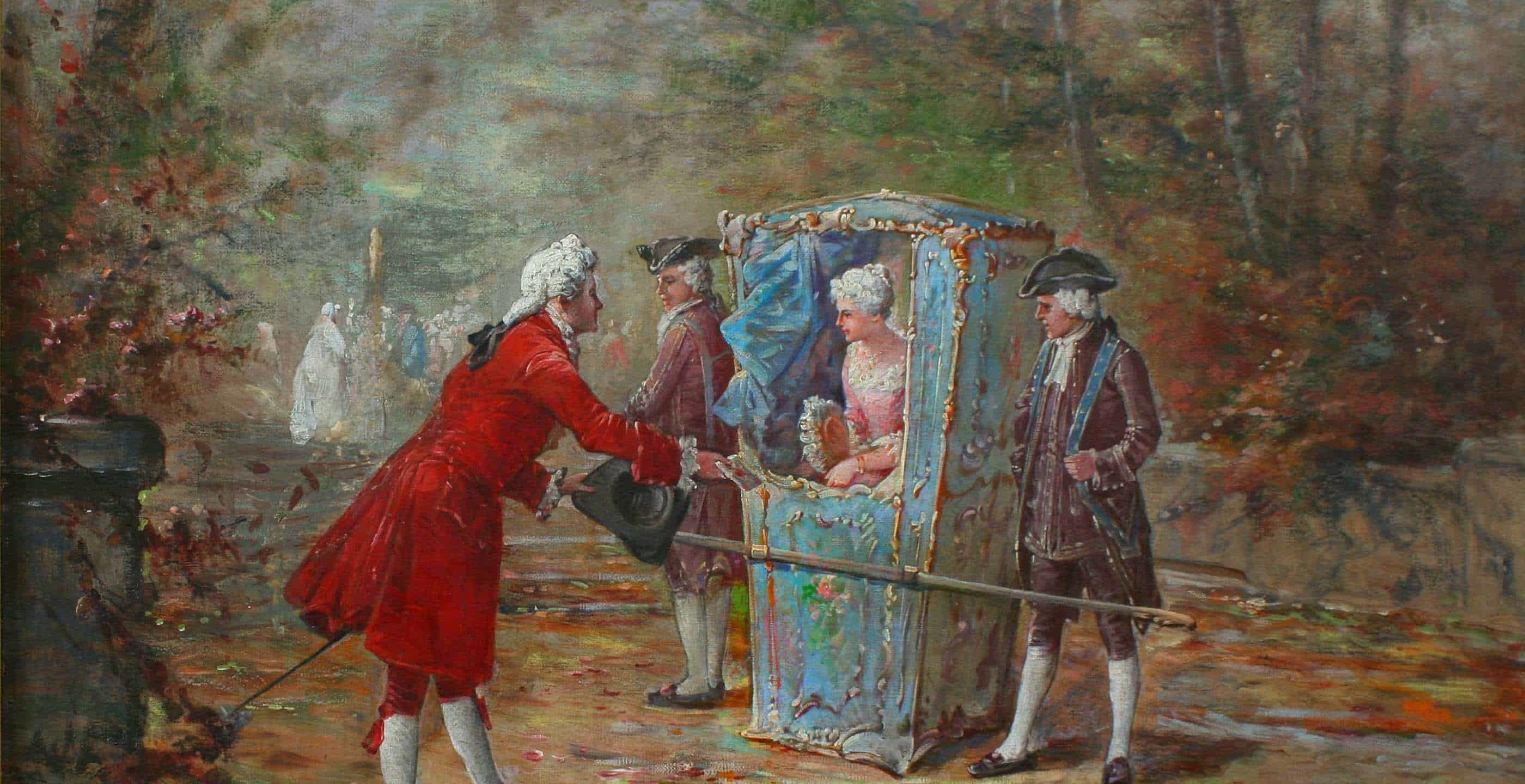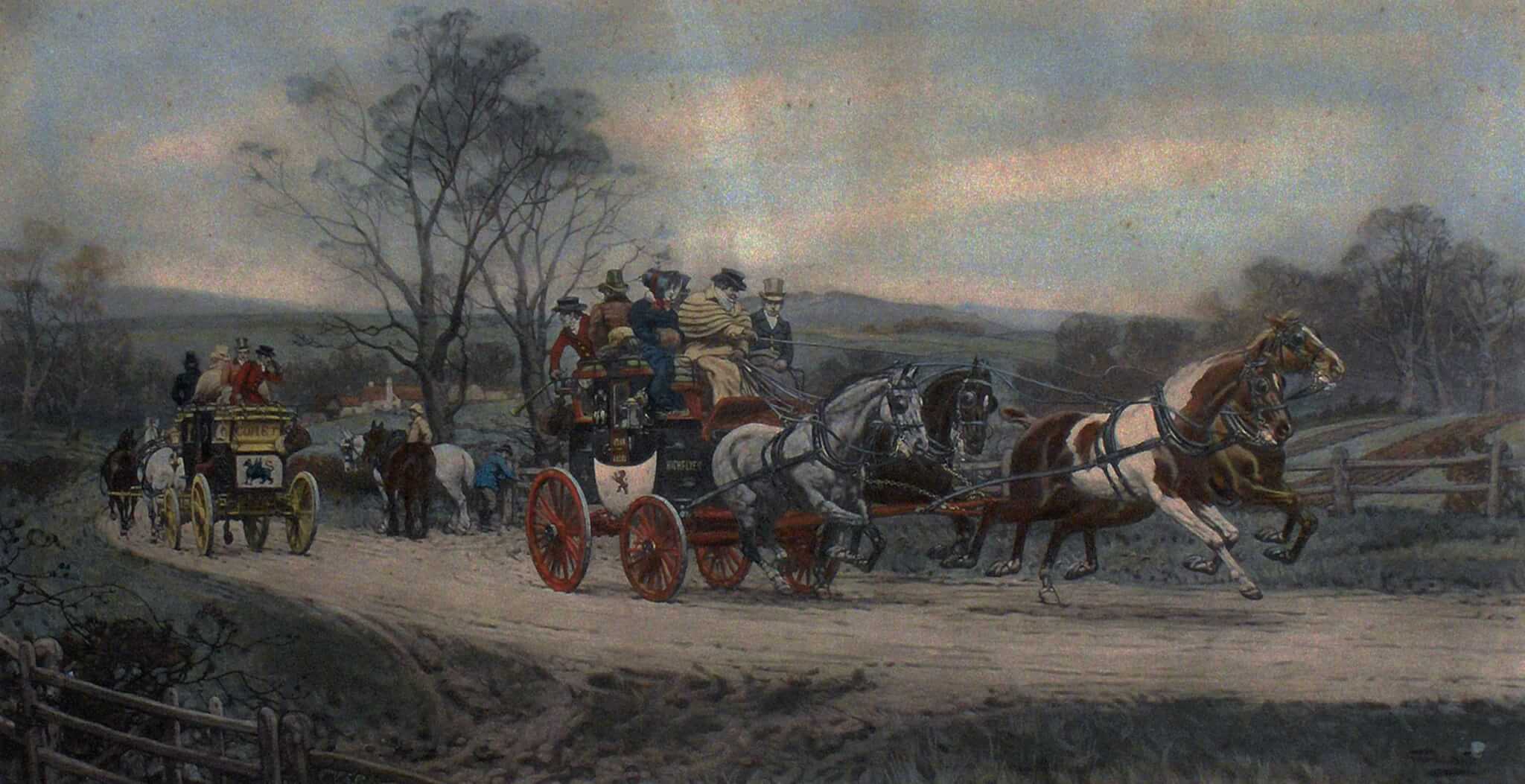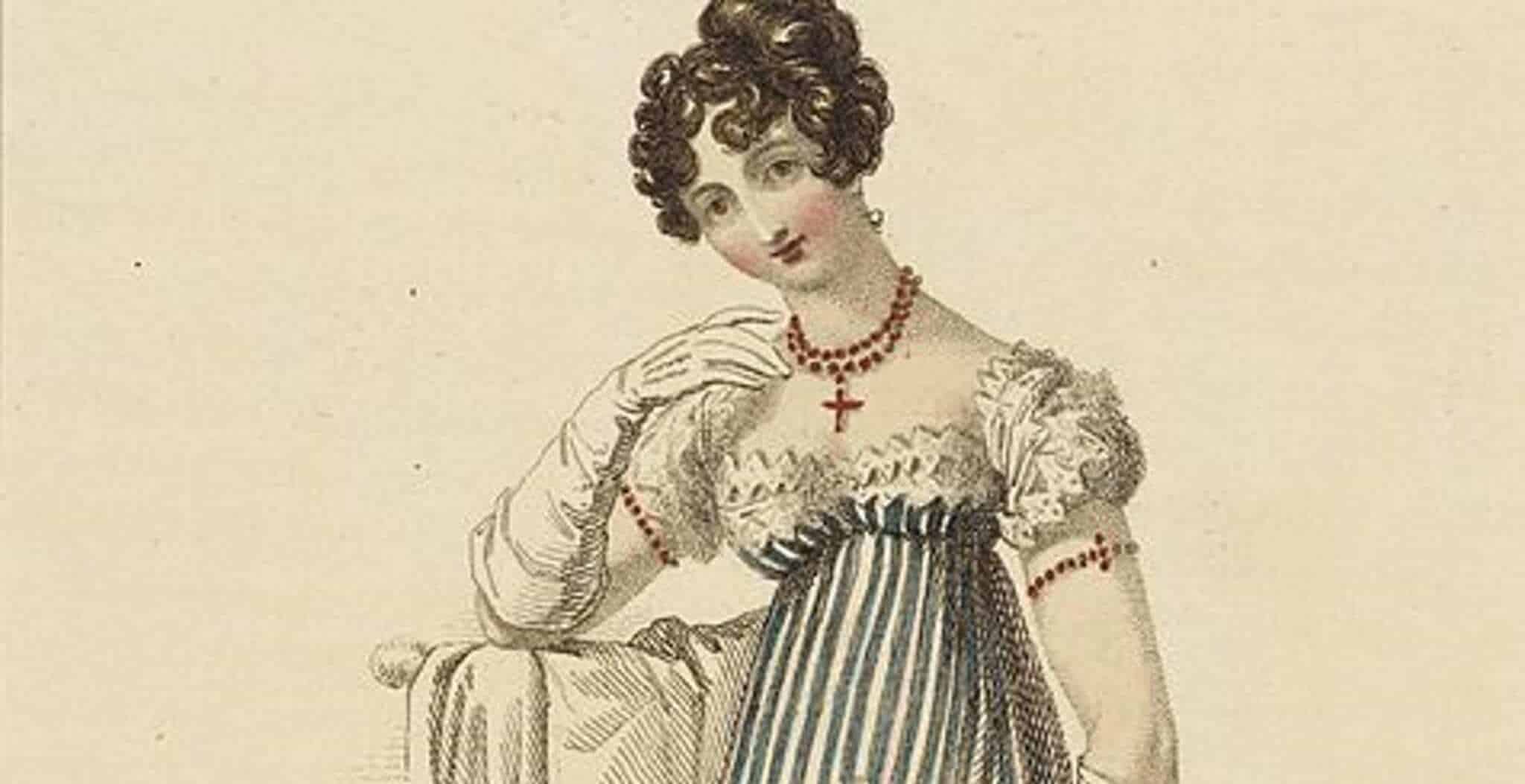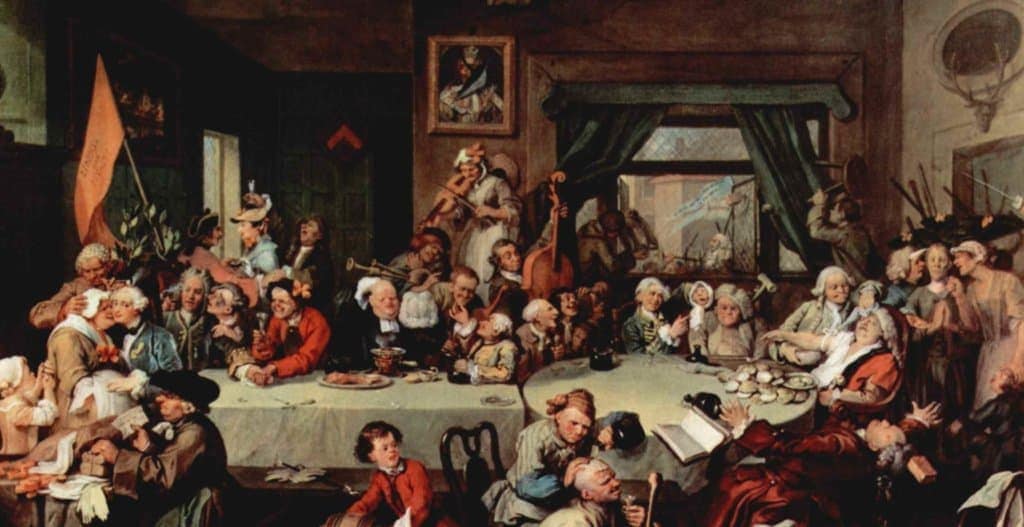Filthy streets littered with mud, refuse and excrement were not only a health hazard in 16th and 17th century Europe, but also made travel difficult and impractical. Until the introduction of the sedan chair, that is.
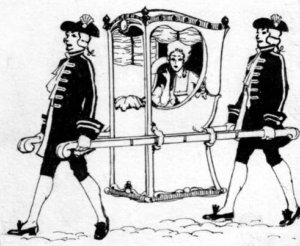
In 1634 Sir Saunders Duncombe introduced the sedan chair for hire in London. They quickly became popular, being cheaper than a hackney cab and often the quickest form of transport in the city, as they could pass down streets too narrow for carriages.
Named after the town of Sedan in France where it was first used, the sedan chair consisted of a seat inside a cabin with a detachable roof, mounted on two poles and carried by two men known as ‘chairmen’, one at the front and one at the rear. The passenger would get in and out through a hinged door at the front of the chair. Not recommended for those who suffered with motion sickness, as sedan chairs swayed and bounced, especially when conveyed at speed through the streets!
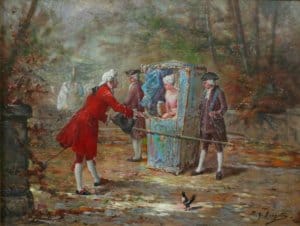
Sedan chairs soon became popular amongst the gentry. Their use allowed the passenger to keep their shoes clean and the detachable roof allowed for the tall, elaborate headdresses sported by fashionable ladies. In spa towns like Bath they were particularly favoured by invalids, for whom travelling by sedan chair meant they could be transported directly from their bedchamber to the baths and then back again.
“Up and by coach with Sir W. Batten and Sir J. Minnes to White Hall, and, after we had done our usual business with the Duke, to my Lord Sandwich and by his desire to Sir W. Wheeler, who was brought down in a sedan chair from his chamber, being lame of the gout…” Samuel Pepys in his diary, 16th February 1663.
Sedan chairs were also popular in Edinburgh, particularly in the city’s Old Town where carriages were unable to navigate the narrow streets.
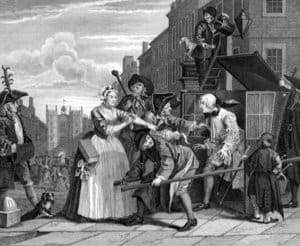 Plate 4, ‘A Rake’s Progress’, William Hogarth
Plate 4, ‘A Rake’s Progress’, William Hogarth
Sedan chairs were allowed legally to travel on the pavement. It was expected that pedestrians would give way to them if they heard a warning shout of ‘Have a care!’ or ‘By your leave, sir!’, but this was often not the case, and so there were frequent accidents, chairs tipping over, etc.
Like taxi drivers nowadays, chairmen were licensed and sedan chair stations were set up from which passengers could hire a chair. Sedan chairs were available for hire around the clock, but after midnight the fare was doubled. After dark, the sedan chair would be accompanied by ‘link boys’ or torch bearers to light the way.
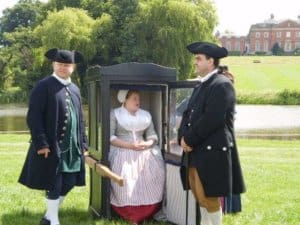
The wealthy would not use these stations but would send their footman out into the street to summon a chair by shouting, “Chair! Chair!”. The very wealthy might have their own chair, kept in the hall and often painted and decorated to reflect the decor of the house.
However, despite its advantages, the sedan chair began to fall out of favour. The rapid expansion of the cities and the distances involved meant that travelling by chair became impossible. The sedan chair became less and less fashionable, and by the mid 19th century had virtually disappeared from the streets.
NOTE: It is interesting that among British pub names, the name ‘Blue Posts’ is rarely if ever to be found outside London. However there are at least 5 with that name in central London and in particular, in Soho and Westminster. As many as 37 pubs by that name have been found on old maps of London but many have closed or changed name over the centuries. Why so many in such a small area? It has been suggested that the two blue posts outside these buildings signified a sedan chair station or rank, rather like a taxi rank. Also the pub name is never found in the singular: it is always ‘Blue Posts’. Similarly, in Bath the 22 or so sedan chair ranks were also denoted by two blue posts.
